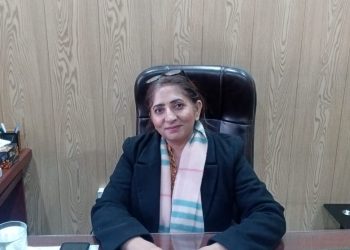Marks World Water Day, emphasizing glacier preservation and sustainable water management. While conservation is necessary, Pakistan must go beyond passive preservation and adopt proactive glacier management and sustainable agriculture practices. These measures will not only ensure long-term water security but also drive economic growth, prevent floods, and enhance agricultural productivity.One such visionary project is the Green Pakistan Excellent Initiative, which aims to restore forests, improve water conservation, and promote climate resilience. However, for Pakistan to achieve true sustainability, this initiative must be complemented by structured glacier management and large-scale corporate agricultural farming. Together, these strategies can transform Pakistan’s economy and environment.
Pakistan’s Glacier Wealth and the Water Crisis
With over 13,000 glaciers, Pakistan holds one of the world’s largest reserves of freshwater outside the polar regions. Despite this natural wealth, the country faces severe water shortages, floods, and droughts—not due to scarcity, but because of mismanagement.
The Mismanagement Paradox
Imagine a household with a huge freezer full of ice, yet its members suffer from a lack of drinking water. This is Pakistan’s reality: we have glaciers storing immense amounts of water, yet poor management leads to water scarcity and catastrophic floods.
The primary issues include:
Unregulated Glacier Melting: Climate change accelerates glacial melt, leading to extreme floods and dry spells.
Lack of Storage Infrastructure: Meltwater flows away unused instead of being stored for dry seasons.
Urban and Agricultural Mismanagement: Settlements and farms are built in flood-prone areas, perpetuating cycles of destruction.
If glacier melt is not controlled, Pakistan will face a worsening water crisis, leading to devastating agricultural failures, food insecurity, and economic instability.
The Urgency of Glacier Management
To ensure sustainable water supply and disaster prevention, Pakistan must scientifically regulate glacier melting through:
1. Planned Glacier Melting
A structured approach to melting 500 glaciers annually can meet water demands without triggering floods.
Geoengineering techniques, such as controlled heat exposure or artificial snowfall, can regulate the melting rate.
2. Water Storage Infrastructure
Reservoirs, rubber dams, and underground storage can capture and regulate meltwater, preventing both floods and droughts.
Projects like the Diamer-Bhasha and Mohmand Dams are steps in the right direction, but Pakistan needs many more localized water storage solutions.
3. Sustainable Glacier Recharge
Glaciers regenerate naturally through snowfall. With proper planning, they can be managed without permanent depletion.
Afforestation in glacial zones can reduce excessive melting while maintaining a continuous water supply.
Green Pakistan Excellent Initiative: A Complementary Solution
The Green Pakistan Excellent Initiative is a great step toward environmental and climate resilience. It focuses on reforestation, ecosystem restoration, and sustainable water use. However, for maximum impact, this initiative must work alongside glacier management strategies to create a truly sustainable water and agricultural system.
Forest Cover and Glacier Preservation: Trees reduce soil erosion, slow glacier melting, and improve water retention in the ground.
Improved Water Conservation: Green Pakistan encourages water conservation techniques that complement glacier management efforts.
Climate Adaptation: The project strengthens Pakistan’s ability to combat climate change and protect its water resources.
This initiative should not be counted in isolation. It must be integrated into a broader framework that includes proactive glacier management and sustainable agricultural reforms.
Corporate Agriculture Farming: An Urgent Need for Pakistan
Beyond water security, Pakistan must modernize its agricultural sector through corporate agriculture farming. This approach promotes:
Efficient Water Use: Corporate farms use drip irrigation, precision farming, and water-efficient crops, reducing wastage.
Model Agricultural Business Structures: Large-scale, organized farms ensure higher productivity, better mechanization, and economic stability.
Increased Food Security: Corporate agriculture can boost wheat, sugarcane, and rice production, making Pakistan self-sufficient and a major exporter.
Why Corporate Agriculture Farming is Necessary
Pakistan’s outdated farming techniques waste water and reduce crop yields.
Small-scale farmers lack the resources to adopt modern methods.
Corporate farming encourages investment, innovation, and sustainable practices.
By integrating glacier management, Green Pakistan, and corporate farming, Pakistan can develop a scientific, research backed approach to water and agricultural sustainability.
A Scientific and Economic Approach
Water resource management should be science driven, not reactive. Many pseudo intellectuals either ignore the crisis or propose impractical solutions. A research-based, commerce-driven approach will:
Prevent catastrophic floods through controlled glacial melt.
Ensure steady water supply for drinking and agriculture.
Enhance Pakistan’s agricultural economy, creating jobs and increasing food security.
Reduce regional tensions by securing Pakistan’s water rights.
Water mismanagement is not just an environmental concern it is an economic and national security threat. Pakistan must recognize this and act accordingly.
Conclusion: The Future is in Our Hands
Pakistan’s water and agricultural challenges are solvable through a unified strategy that combines:
Proactive glacier management
The Green Pakistan Excellent Initiative
Corporate agriculture farming
By shifting from reactive disaster response to proactive, science-driven management, Pakistan can turn water scarcity into abundance, protect lives, and strengthen the economy.
The time to act is now. Let’s invest in research, infrastructure, and sustainable policies to transform Pakistan’s glacial wealth and agricultural potential into a prosperous future.


















